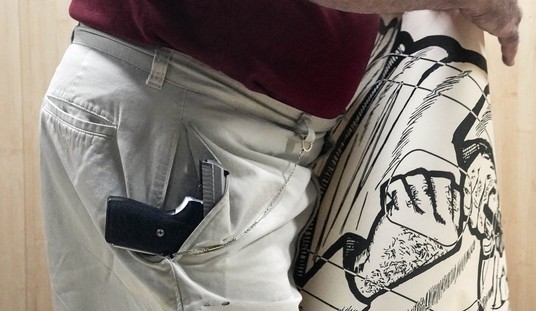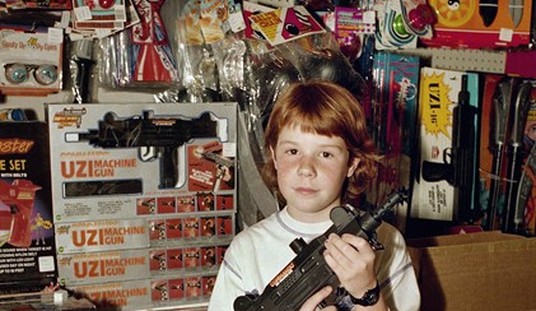
Citizens of New York City, beware!
NYPD brass are doing their best to avoid having to shell out the millions of dollars it will take to make sure that their officers are reasonably competent with their handguns, and are instead dictating policy that makes it harder for officers to shoot the handguns they are allowed to use as accurately as they otherwise might.
New York Police Department desk jockeys are banning officers from using the previously approved Kahr K9 9mm pistol double-action-only (DAO) as an off-duty carry gun.
They’re scapegoating the pistol for more than a dozen “accidental shootings” that are actually the result of poor officer training.
The NYPD has instructed cops to stop carrying an off-duty gun that has a trigger so light it’s been blamed for a series of accidental discharges, the Daily News has learned.
NYPD spokesman Paul Browne says the Kahr K-9 semi-automatic pistol has led to more than a dozen such shootings — none resulting in a fatality. The shootings have occurred over the last few years, a source said.
The NYPD last Monday ordered that the revocation order be read aloud to cops at each precinct for 10 consecutive roll calls.
Kahr Arms has done business with the NYPD since 1997, and more than 5,000 Kahrs have been sold to city cops, said Frank Harris, a spokesman for the gun firm.
Let’s interject a little reality into this story that the NYPD brass obviously doesn’t want to hear.
The Kahr K9 is being used as a scapegoat for a much deeper underlying problem. The Kahr series of pistols serves officers and concealed carriers around the nation who simply do not report this sort of “problem,” because there is nothing at all wrong with the firearm.
The actual “problem” is specific, and confined to the NYPD.
[article continues on next page]
The technology

Despite the misrepresentation made to the media, there is nothing at all “light” about the Kahr K9 trigger.
The Kahr K9 features a long double-action-only (DAO) trigger pull of 7.5 to 9 pounds, and requires the trigger to be deliberately pulled for the gun to fire. It cannot be fired “accidentally.” The trigger pull on the K9 that the NYPD brass says is “too light” is the same or is more than most sidearms issued to police forces around the nation which feature a shorter trigger pull and shorter reset after the first shot is fired.
Many law enforcement agencies use variations of a polymer-framed, internal-safety-only, striker-fired pistol as their standard agency firearm for both on and off duty use. Two of the most popular agency pistols of this type are the Glock series of pistols, and the newer M&P line of pistols from Smith and Wesson.
The average trigger pull of a Glock with a 5.5 lbs disconnector is right around the lower end of the amount of force needed to fire a Kahr K9 (usually around 7 pounds), but features a shorter trigger pull and a much shorter reset for follow-up shots. Despite this, very few agencies are reporting “accidental” shootings with Glock pistols, and those that do blame the officer’s negligence and or training, not the gun.
Smith & Wesson’s M&P series has a similar takeup and reset, and the triggers on these pistols typically require about 6-7 pounds of force. The rare “accidental” discharges with M&Ps are likewise blamed on officer negligence in post-shooting investigations.
For other styles of handguns that feature external safeties (such as the single-action 1911 favored in some elite law enforcement units), trigger pulls of 3-5 pounds are common.
Experts such as Larry Vickers (former U.S. Army Delta Force operator and firearms trainer) suggest that the trigger pull for a duty handgun be in the 4-6 pound range.
Why is the NYPD demanding their officers to carry guns with a trigger pull double that of what experts recommend?
They’re doing so cover up long-standing deficiencies in NYPD culture and training.
[article continues on next page]

The actual problem – inadequate training, ignorant culture
Despite the 4-6 pound trigger pull suggested by shooting professionals for duty weapons, the NYPD forces their officers to use triggers in the 12-13 pound range. Why? They do so in an attempt cover up the lack of firearms training within the NYPD.
The NYPD has long had a history of negligent discharges that officers in most other parts of the country have never encountered.
This is due both a cultural issue in the New York/Northern New Jersey area which provides most of the officers entering the NYPD police academy, and a problem within the academy environment itself.
Future policemen in most other parts of the nation come from cultures where firearms are normal items owned by law-abiding citizens. Most have a certain degree of familiarity with rifles, shotguns, and pistols before they join their local academies, and many have the “four rules” of gun safety drilled into their heads before they’re old enough to drive.
The draconian gun control laws that have emasculated generations of New Yorkers ensure that most cadets entering the NYPD police academy have never (lawfully) touch a handgun before they became cadets. Their “experience” with firearms has been with toys, video games, and what they’ve seen on television and the movies. In other words, they’ve had very little to exposure to no exposure to firearms at all. Far from being comfortable with them, many are actually scared of their guns.
Already hobbled by a lack of experience and a poor mindset towards their pistol, they’re then saddled with too-brief firearms orientation and training cycles in the academic environment of the academy, followed by hands-on training with firearms that is laughably brief, with incredibly unrealistic and low passing standards.
Each and every one of the NYPD’s “accidental” shootings—whether it was with a Kahr or a Glock with a “New York” trigger—is a clear violation of one of the cardinal rules of shooting. Specifically, officers in every instance violated Rule 3: “keep your finger off the trigger until your sights are on the target.” That this happens time and again shows that there clear and obvious training problem that is an endemic problem within the NYPD.
Unfortunately, the NYPD’s brass would rather make trigger pulls absurdly, impractically high than spend the money on labor and ammunition costs to provide officers with the amount and quality of training that they actually need.
These high trigger pull weights demanded by NYPD brass, when combined with inadequate training, makes firing accurate shots much harder and helps explains why the NYPD shoots so many innocent bystanders with shots that miss their intended targets.
Perhaps when future innocent bystanders start suing and winning civil and criminal cases against the NYPD then the city will realize that putting under-trained officers and intentionally hampered firearms together on the street is a bad idea.
We can only wonder how many lives must unnecessarily shattered first.








Join the conversation as a VIP Member